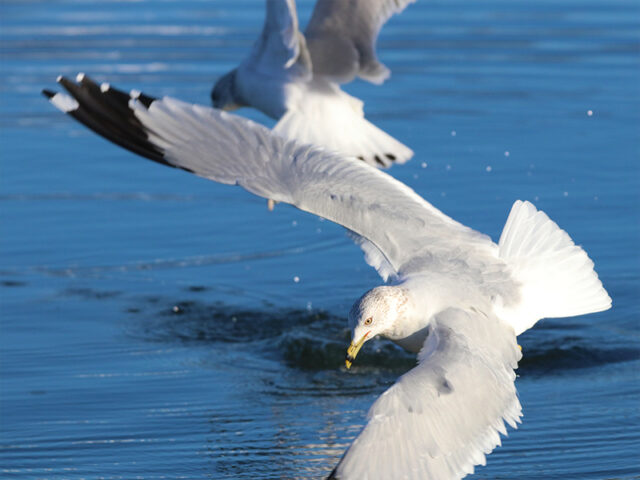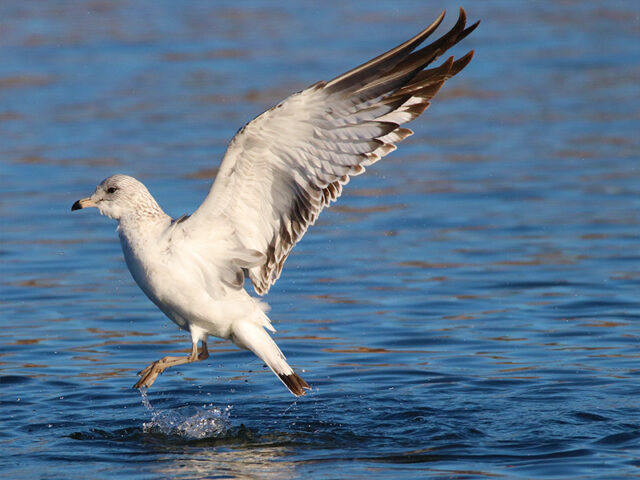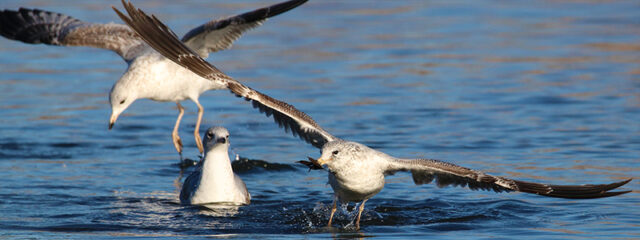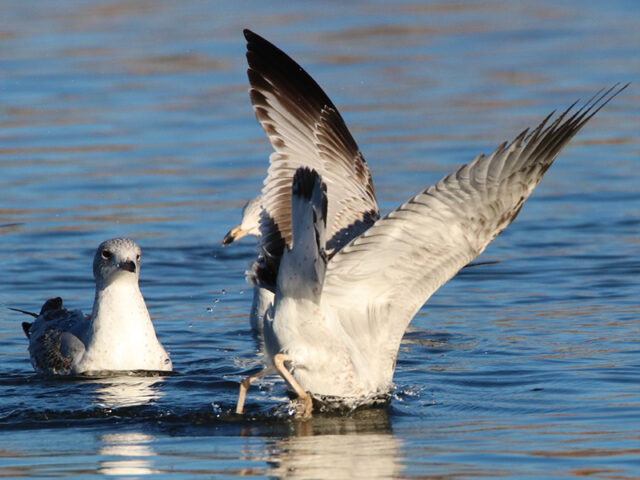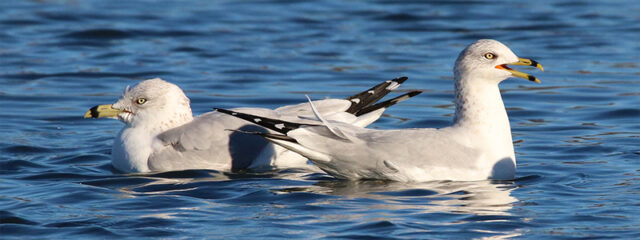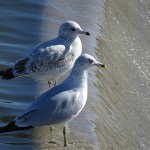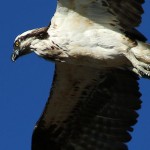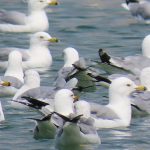Dateline – January 2022 – Lewisville, Texas
Birds in flight can be a challenging subject for the wildlife photographer. Recording pictures of avians on the wing is a formidable task for many reasons… Birds are often difficult to get close to. They are fast moving, and their flightpaths are often unpredictable. In most cases it takes more than just a little hard work and serendipity to get the kind of shots you are after.
But, some bird species are more cooperative than others. A good example is the Ring-billed Gull. In the winter, North Texas plays host to large flocks of these crow-sized birds. They can be found congregating in many different places around the metroplex. You can find them on and around area reservoirs. They also frequent the multitude of smaller lakes and ponds that are located all over the Dallas/Fort Worth area. Sometimes Ring-billed Gulls even gather in large empty parking lots. And they can always be found feeding at busy municipal landfills.
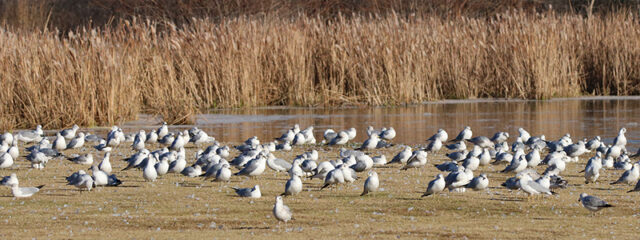
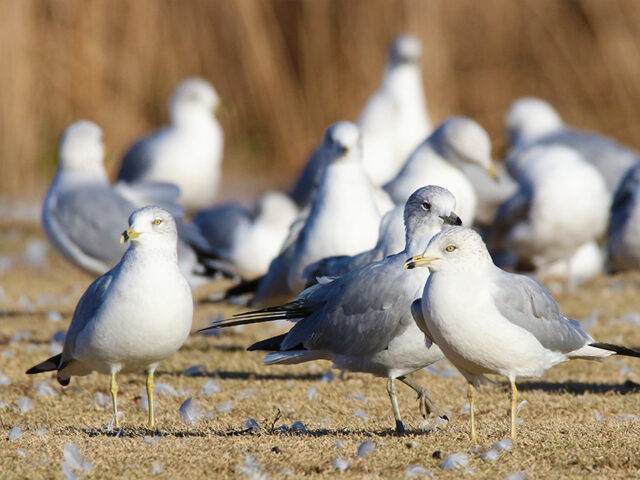
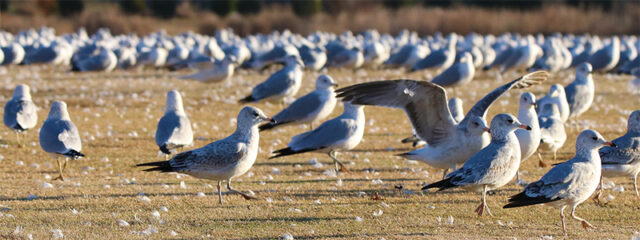
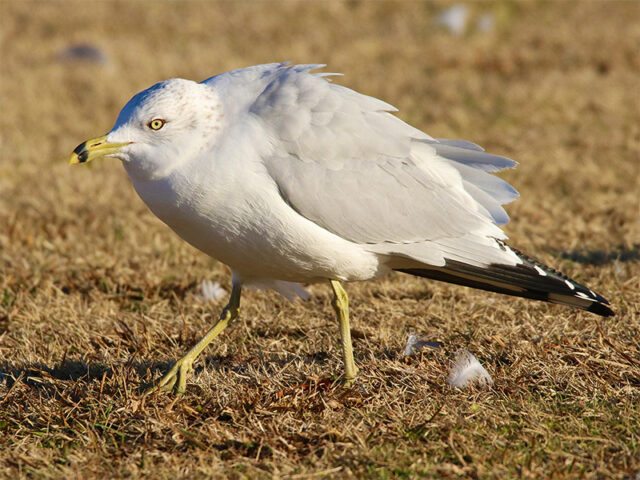
So, what makes Ring-billed Gulls such good subjects for wildlife photography? Well to begin with, Ring-billed Gulls are plentiful, easy to find, and predictable in their behaviors. These specific characteristics can give the photographer a greater degree of control over things like session timing and lighting quality.
Ring-billed Gulls in the metroplex can be relatively tolerant of observation. In area parks where they congregate, these bird often become very accustomed to the presence of people, allowing for a reasonably close approach and a retention of candid behavior.
Further, Ring-billed Gulls are sleek and attractive birds. They present an intriguing degree of plumage and color variation between individuals of different ages. These gulls are also cooperatively slow in flight, while at the same time being highly aerobatic. They frequently strike aerial poses that virtually guarantee a compelling set of pictures. All of these factors taken together can definitely work in the favor of the resolute wildlife photographer.
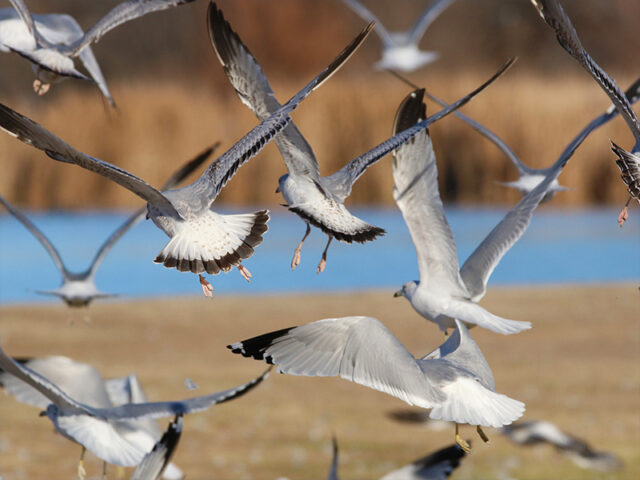
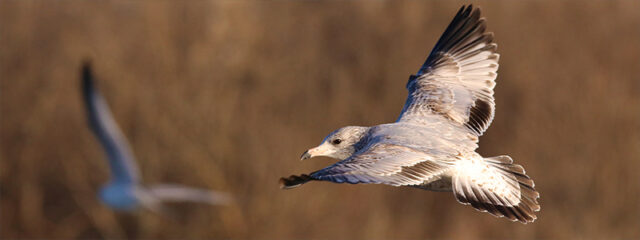

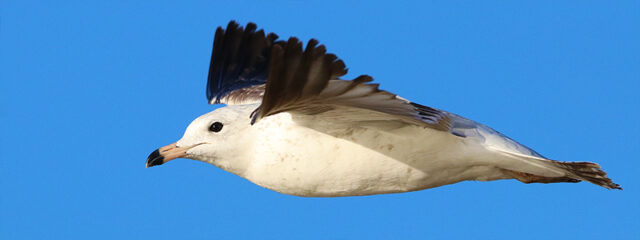

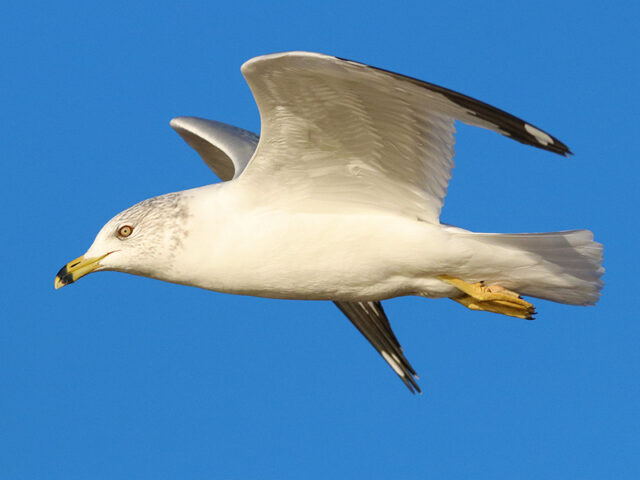
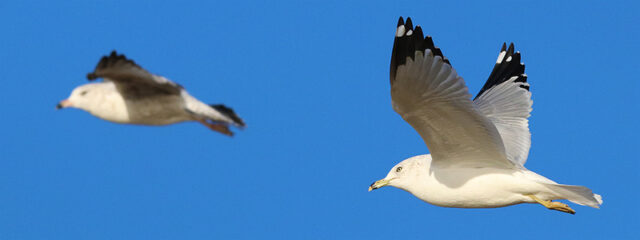
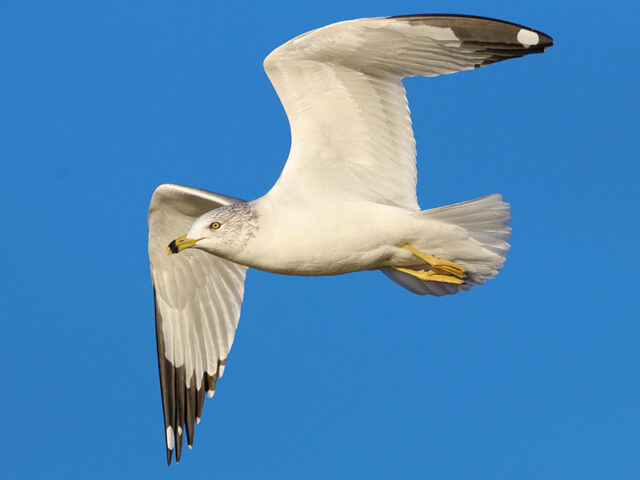
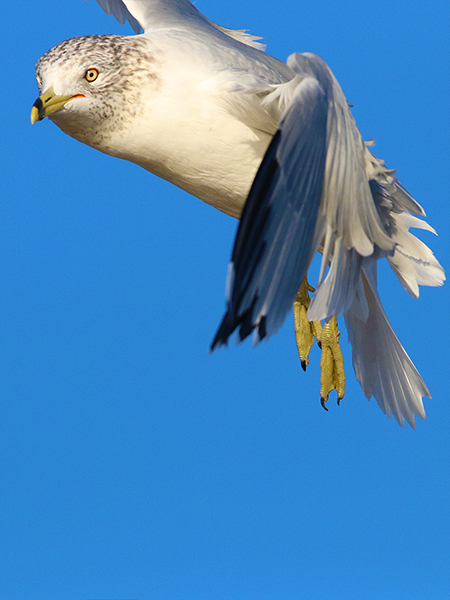
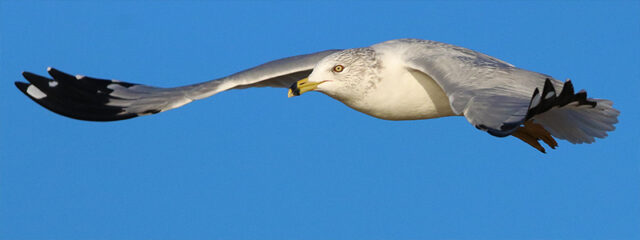
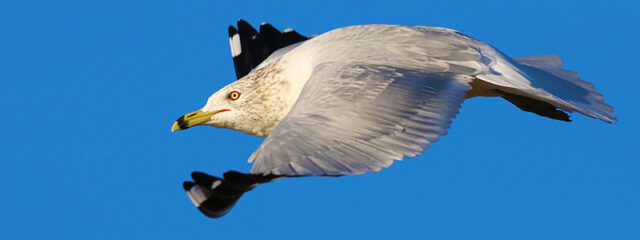

I’m often asked what these gulls are doing so far from the ocean. It’s a common misconception. These are not “sea gulls” per se, but instead they are birds of the interior. Consider the range map below (from Wikipedia). You can see from this illustration that Ring-billed Gulls spend much of their breeding season in the far reaches of North America. And during their annual migrations they can appear just about anywhere in the continental United States. In the winter, we have Ring-billed Gulls in North Texas, and they are present here for the entire season.
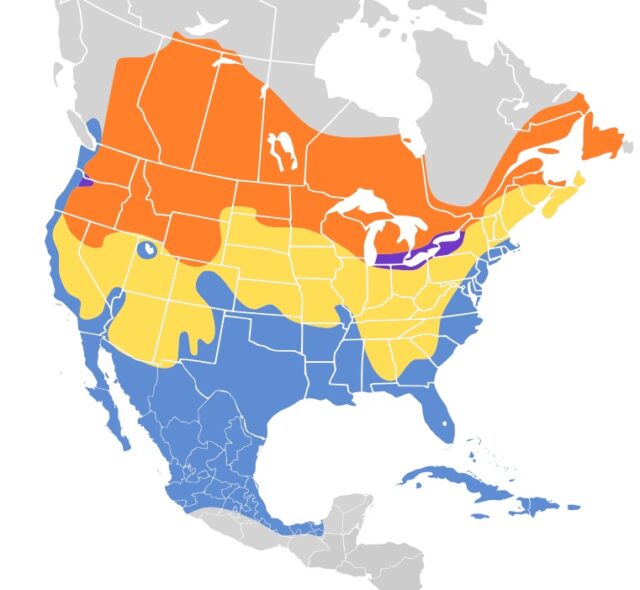
ORANGE – Breeding, BLUE – Winter, YELLOW – Migration, PURPLE – Year-round

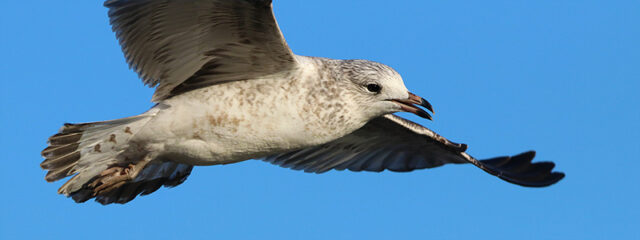

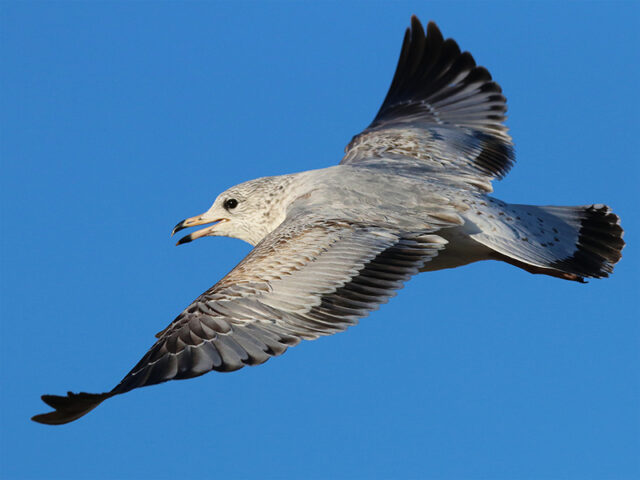
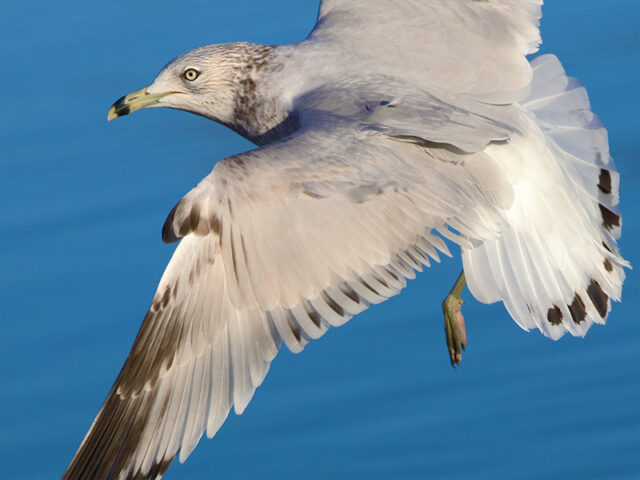


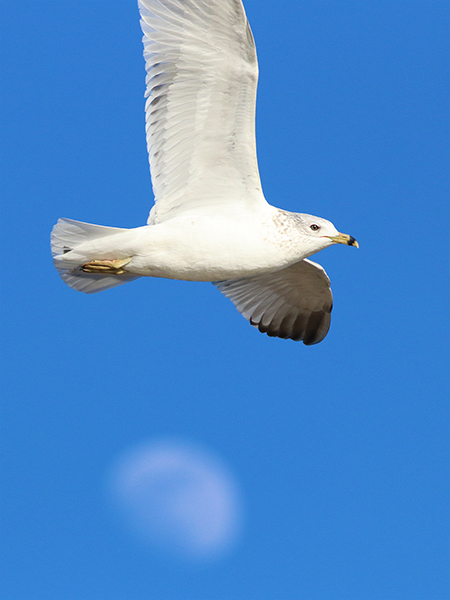

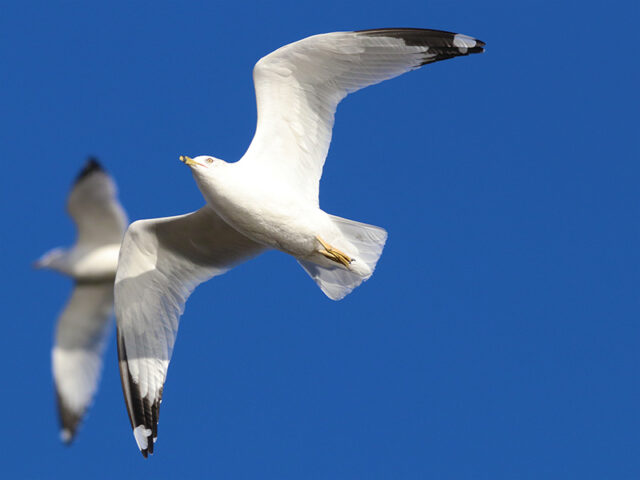
Another great thing about Ring-billed gulls is, that where they are present, it is often possible to get pictures of them on the ground, in the air, and on the water. A lucky photography session will produce images of many different behaviors, on a satisfying variety of backgrounds!
